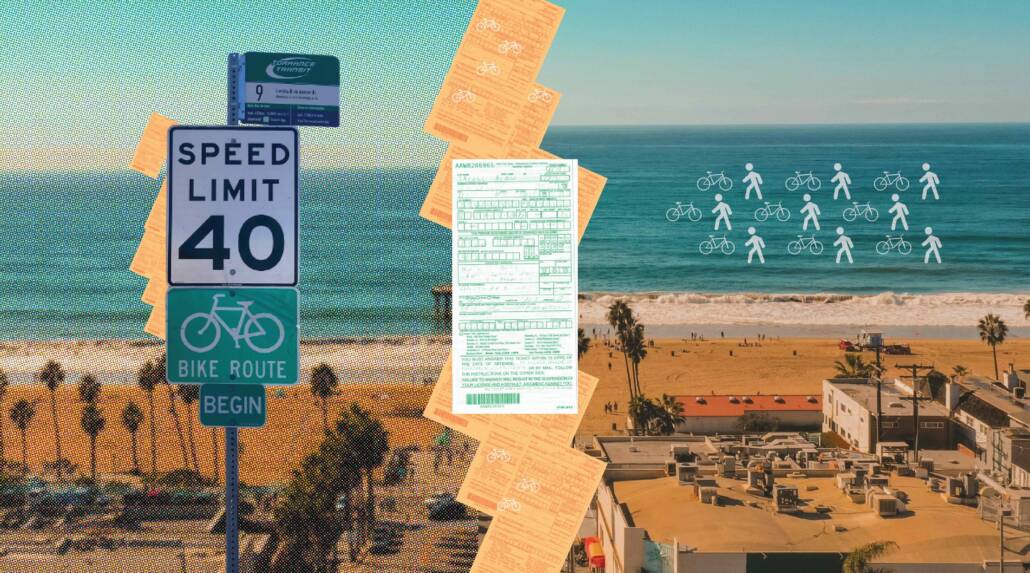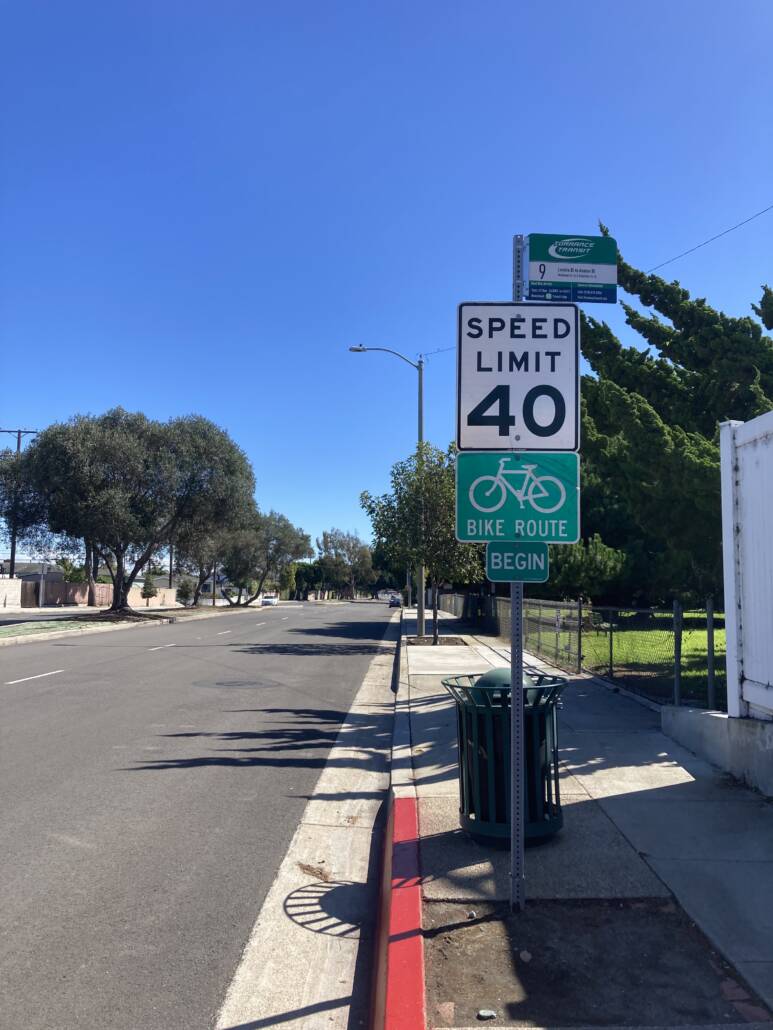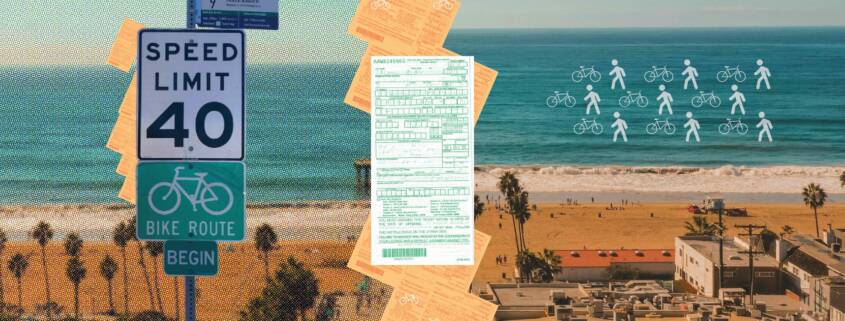How South Bay Cities Enforce Car Dependence by Design
The Week Without Driving seeks to highlight that nearly a third of Californians can’t rely on driving for their personal mobility. This year, the South Bay Transit Summit in Torrance also exposed how overlapping systems of infrastructure, regulation, and enforcement leave even willing bike riders few real choices. In the South Bay, this coercion isn’t theoretical.
LA County’s South Bay offers a case study in how dependence becomes design. A refinery explosion in nearby El Segundo averting catastrophe only by luck of the wind made it an apt week to reconsider life beyond fossil fuels. Yet the region’s streets, laws, and enforcement practices make that reflection nearly impossible. Here, driving isn’t merely convenient; it’s compulsory.
The gap between what’s possible and what exists is a frequent source of frustration for locals like Grace Peng at South Bay Forward, “Torrance/Carson is the third-largest job center in LA County. El Segundo/LAX is No. 4. Providing car-free access to these jobs is not just business-friendly; it’s also the minimum requirement for responsible regional sustainability and economic vitality.”

A Region That Criminalizes Alternatives
The South Bay’s coastal streets could be an ideal place for short trips by bike or on foot: most residents live within three miles of work, school, or errands. Instead, high-speed arterials, wide intersections, and sidewalk bike riding bans make those short distances feel like hostile terrain.
Local governments have responded to the rise of e-bikes not as an opportunity to improve safety or expand access, but as a crisis to be contained. Torrance has considered banning e-bikes from sidewalks where no dedicated bike infrastructure exists — forcing riders into 45 mph traffic lanes (alongside the other South Bay refinery that blew up ten years ago: https://www.csb.gov/exxonmobil-torrance-refinery-explosion-/).
The penalty in Manhattan Beach is far more extreme. Riders report receiving municipal citations rather than standard traffic tickets, meaning the city — not the state — sets the terms. Contesting one of these citations requires a $1,500 deposit up front, returned only if the appeal succeeds. One rider who tried to challenge his ticket described paying nearly $900 in total after multiple hearings and days lost to court appearances.
“I received my ticket on Redondo Ave and 19th Street at 8:15 a.m. during peak school drop-off time,” said Mark Polak. “I had blown through the stop sign without significantly slowing, but did not interfere with anyone’s right-of-way. The policeman said he was going after bikes and cars equally — but the bicycle fine is $500, while the State of California fine for running a stop sign in a motor vehicle is $238.”
Polak added that Manhattan Beach once offered an educational diversion program for bicycle infractions. That’s gone now. “He said I might be able to negotiate the fine down with the city finance office, but when I called, they thought I was crazy. I paid the fine.”
“Now that I’ve had one ticket, I’m worried about getting another with an enhanced fine for something I do every day,” he said, noting the lack of signal sensors that detect bicycles and the absence of safe crossings on Redondo Avenue — ironically a designated bike route. “Sometimes I even run the red light very early in the morning because the sensor doesn’t register bikes.”
Another rider, Kyle Richardson, was cited while taking his two children to AdventurePlex in Manhattan Beach on an electric cargo bike.
“For years I’ve taken my kids to daycare, school, and the beach on our electric cargo bike,” Richardson said. “On the morning of August 20, 2025, I was taking my two kids to AdventurePlex — one of the more affordable childcare facilities in the South Bay. When we arrived at N Redondo Ave, the road was busy with cars. I did a rolling stop to keep momentum with our 400-pound bike and checked that no cars were coming. Still, two officers pulled me over and wrote me a $500 ticket.”
He added, “I lead a bike bus in North Torrance at Carr Elementary. The Torrance Police Department supports and has attended our bike bus. The Manhattan Beach City Council, mayor, and Police Department should do more to support families in their communities to ride their bikes to school rather than punish them with excessive fines.”
Meanwhile, cars routinely roll through stop signs, block bike lanes, and speed down residential corridors with little consequence.

Predictable poor results
Infrastructure that privileges speed over safety, ordinances that ban bikes from the only safe spaces to ride, and a ticketing regime that fines bicyclists hundreds of dollars for common-sense behavior all converge to send a single message: don’t bother trying. Even as residents look for ways to reduce their reliance on fossil fuels, especially in a region defined by refineries and freeways, the system keeps them cornered, forced back into cars by design.
If the South Bay offers a preview of what happens when local policy drifts away from statewide mobility goals, it’s a warning worth heeding. The conditions that make driving mandatory here are not accidents of geography or culture; they are the predictable results of rules, enforcement priorities, and infrastructure decisions that have made any other way of getting around feel impossible.
It’s hard to miss the irony. In a week marked by yet another refinery explosion, South Bay residents were reminded that the region’s dependence on oil doesn’t just pollute the air — it dictates how people move. The smoke clears, the streets reopen, and the cycle continues: fossil fuel production and fossil fuel consumption reinforcing each other, one ticket and one traffic lane at a time.




